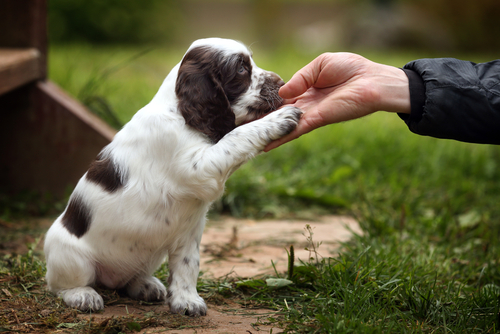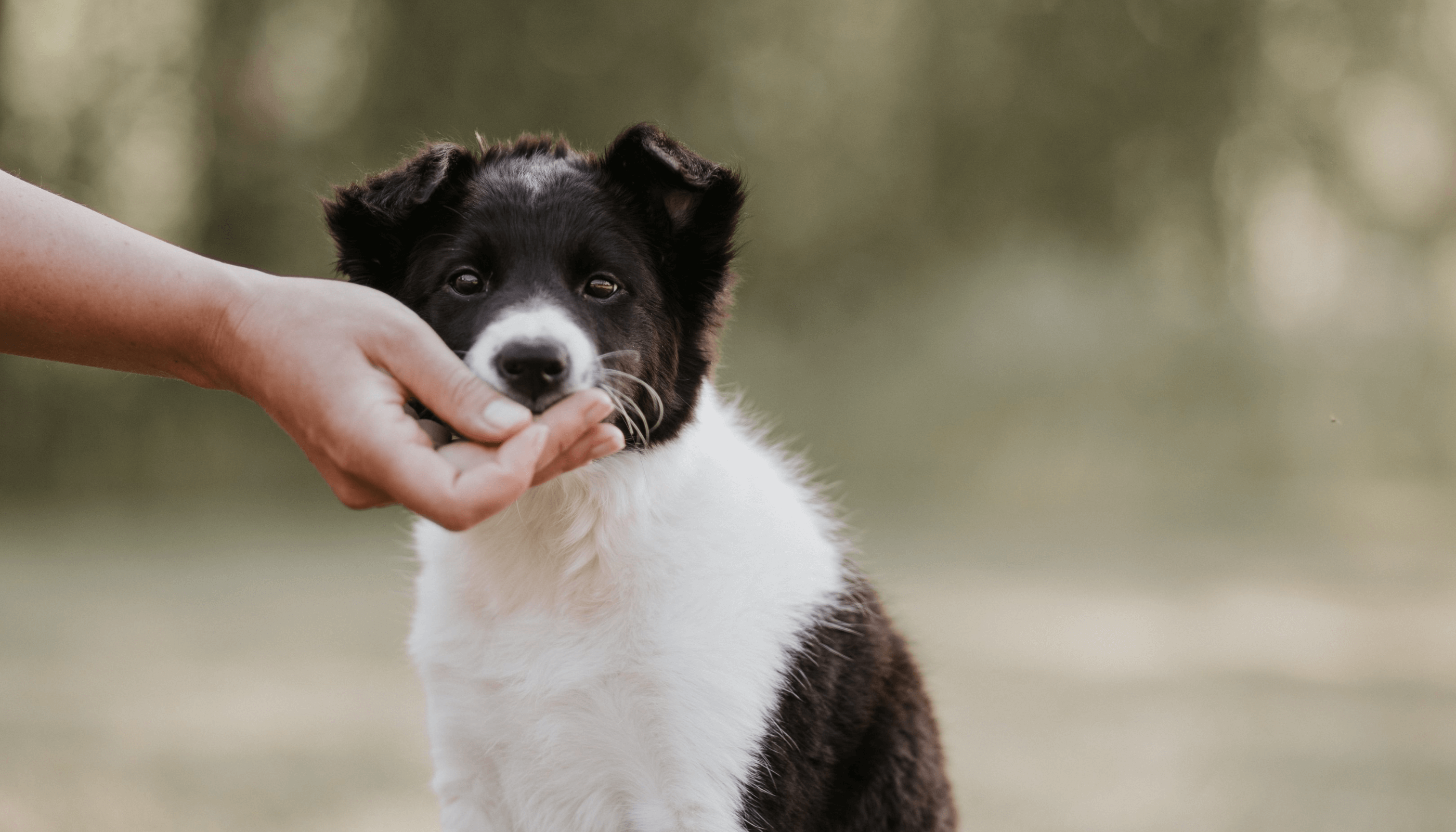Puppy Training at Home: Simple Steps to Raise a Well-Mannered Dog
Puppy Training at Home: Simple Steps to Raise a Well-Mannered Dog
Blog Article
Leading Young Puppy Training Techniques to Ensure a Mannerly Pet
Effective pup training is vital for cultivating a well-behaved friend, and numerous methods can significantly affect a pet's growth. Among these, positive support stands apart as a fundamental strategy, promoting trust and motivating preferable habits. Consistency in commands and very early socializing are similarly important, laying the foundation for a well-adjusted family pet. In addition, the duties of dog crate training and chain etiquette can not be forgotten. As we explore these techniques additionally, it becomes clear that the success of puppy training depends upon a combination of methods that can transform your family pet's habits in impressive ways.
Positive Support Techniques
Utilizing favorable support methods is important for reliable young puppy training, as it urges wanted behaviors through benefits instead of penalty. This method profits from the all-natural learning processes of pet dogs, reinforcing etiquette by providing substantial and immediate incentives, such as treats, praise, or playtime. By connecting favorable end results with specific activities, pups are more probable to repeat those behaviors in the future.
Rewards ought to be offered right away after the wanted habits takes place to create a clear link in the young puppy's mind. In addition, differing the types of incentives can keep a pup's rate of interest and inspiration throughout the training procedure.

Uniformity in Training Commands
Preserving uniformity in training commands is vital for reinforcing the lessons discovered through positive support methods. Dogs flourish on regular and predictability, so making use of the exact same spoken commands and hand signals for particular habits is necessary. This uniformity helps pups recognize what is anticipated of them, reducing complication and disappointment for both the animal and the fitness instructor.

Timing additionally plays a substantial duty in uniformity. Commands need to be supplied promptly throughout training sessions and complied with instantly by positive reinforcement, such as treats or appreciation. This immediate action helps solidify the organization between the command and the wanted habits.
Integrating uniformity into training sessions will certainly produce a stable knowing setting, promoting quicker proficiency of commands. Ultimately, a well-structured technique promotes a strong bond between the puppy and its proprietor, resulting in a much more well-behaved and obedient animal.
Socializing With Various Other Pets
Socialization with various other pet dogs is important for a young puppy's advancement, as it assists them discover suitable actions and interaction skills in diverse social contexts. Very early communications with various pets can significantly influence a pup's temperament and flexibility in numerous situations. When puppies are subjected to a selection of animals, they come to be extra confident and much less frightened, which can prevent possible behavioral issues later in life.

Additionally, observing body language you could try these out during interactions is essential. Show your pup to identify signals from various other family pets, such as indicators of playfulness or discomfort, fostering shared regard and understanding. Routine socialization not only boosts your puppy's social skills yet likewise adds to their general health, creating a much more unified living setting. To conclude, focusing on interactions with various other family pets will produce a socially skilled and well-rounded pet.
Pet Crate Training Advantages
Recognizing the numerous benefits of pet crate training can significantly enhance both the pup's and proprietor's experience. Crate training offers a safe and safe atmosphere for pups, guaranteeing they really feel protected when left alone. This sense of protection can substantially decrease anxiety and stress and anxiety degrees for both the family pet and the owner.
In addition, pet crates work as a beneficial housebreaking device. Young puppies normally stay clear of dirtying their resting location, therefore urging them to hold their bladder up until they are allow outside. This impulse can accelerate the housebreaking procedure, promoting excellent routines early.
When not being watched,Crate training also helps in managing a puppy's habits - puppy training. By supplying an review assigned room, owners can prevent damaging behaviors, such as chewing on furniture or getting involved in hazardous substances. Furthermore, dog crates can be valuable during travel, using a familiar room that can help soothe a puppy in brand-new settings.
Lastly, establishing a crate routine encourages self-reliance, allowing young puppies to learn exactly how to be alone without anxiety. Overall, crate training is a reliable technique for advertising security, tranquility, and discipline, causing a well-adjusted, well-behaved family pet.
Chain Training Basics
Leash training is an essential facet of liable family pet ownership that ensures a satisfying and risk-free walking experience for both the pup and its proprietor. Correct chain training begins early, preferably throughout the puppy's socializing period. When out in public., this training aids establish good habits and advertises favorable habits.
To start, pick a comfortable collar or harness that fits your young puppy well. Affix a strong chain, guaranteeing it is not as well long, as this can lead to drawing and unpredictable behavior. Beginning in a peaceful setting to lessen diversions and gradually introduce your pup to new environments.
Use favorable support strategies, such as treats and appreciation, to urge your puppy to stroll close to you. If your young puppy pulls, stop walking and wait for them to return to your side before continuing.
Furthermore, integrate brief training sessions with fun interruptions to develop your pup's emphasis. With dedication and persistence, leash training will lead to an accommodating friend, making walks delightful for both the proprietor and the puppy.
Verdict
To conclude, utilizing effective pup training methods is critical for creating a well-behaved animal. Favorable support fosters trust and urges desired actions, while uniformity in commands aids in understanding. Socialization with other pets improves adaptability and social skills, and dog crate training offers a secure setting that supports house-breaking efforts. Chain training develops correct walking behaviors, contributing to delightful outings. Generally, these methods jointly promote a harmonious connection in between pups and their proprietors.
As we discover these methods better, it comes to be clear that the success of puppy training pivots on a Web Site combination of methods that can change your family pet's actions in remarkable means.
Using positive reinforcement techniques is crucial for effective pup training, as it encourages wanted habits through benefits rather than penalty.Crate training likewise helps in taking care of a young puppy's actions when unsupervised.Leash training is a fundamental aspect of responsible pet possession that makes certain a pleasurable and safe strolling experience for both the pup and its owner.In conclusion, using efficient young puppy training methods is essential for establishing a well-behaved pet.
Report this page